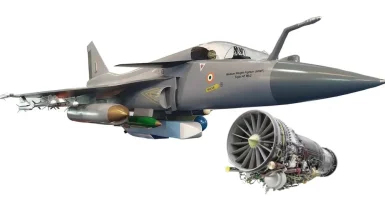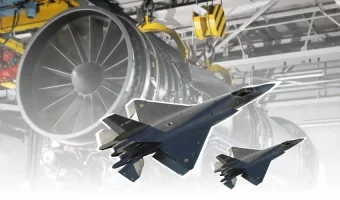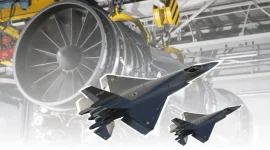- Views: 5K
- Replies: 50
The competition to develop the engine for India's next-generation fighter jet has intensified, as European aerospace leaders Rolls-Royce and Safran have both offered advanced Variable Cycle Engine (VCE) technology for the project.
In their proposals to India's Defence Research and Development Organisation (DRDO), both companies have also guaranteed a complete 100% transfer of technology and intellectual property rights, a key demand for India's strategic autonomy.
The engine, which will have a thrust capacity between 110 and 130 kilonewtons (kN), is being co-developed with the Gas Turbine Research Establishment (GTRE) to power the Advanced Medium Combat Aircraft (AMCA).
The inclusion of VCE technology is a significant step, as it is typically associated with sixth-generation fighters, future-proofing the AMCA for decades to come.
The AMCA and its Strategic Importance
The AMCA is the cornerstone of India's future air combat strategy and a critical element of its national defence modernization. This 5.5-generation stealth fighter is designed to give the Indian Air Force a technological edge over regional adversaries.While the initial AMCA Mk-1 squadrons are expected to fly with an existing off-the-shelf engine, this new, powerful engine is being developed for the more advanced AMCA Mk-2 variant.
The project timeline aims for a first flight around 2029-2030, with induction into the armed forces slated for 2035.
For the aircraft to be effective, its engine must support demanding capabilities such as supercruise—the ability to fly at sustained supersonic speeds without using fuel-intensive afterburners.
It must also have a low infrared signature for stealth and be able to power advanced systems like AI-controlled drone swarms and directed-energy weapons.
Explaining Variable Cycle Technology
The introduction of VCE technology directly addresses the DRDO's requirement for a future-ready power plant.Unlike conventional jet engines that are fixed in their design for either high fuel efficiency or high thrust, a Variable Cycle Engine can change its internal airflow to adapt in flight.
It can operate with high fuel efficiency for long-range cruising and instantly switch to a high-thrust mode for combat manoeuvres.
This adaptability could provide up to 30% greater range and 20% faster acceleration compared to current fifth-generation engines, a crucial advantage for the AMCA platform.
Competing Offers from Aerospace Giants
France's Safran has updated its initial proposal to meet India's requirements for complete technological sovereignty.The company, known for the M88 engine that powers the Rafale jets, initially sought to retain 50% of the IPR. However, it has now matched its competitor's offer of full ownership.
This change comes after DRDO insisted on complete control, a lesson learned from past collaborations on the Kaveri engine program where limited technology access hindered independent development.
Safran's offer involves creating a brand-new 110–130 kN thrust engine that could also be used for India's Twin Engine Deck-Based Fighter (TEDBF).
Rolls-Royce of the United Kingdom is considered a strong contender in the race. The company has proposed a unique 110 kN engine specifically for India, distinct from the one it is developing for the Global Combat Air Programme (GCAP) with Italy and Japan.
Leveraging its extensive experience with the Eurofighter Typhoon's EJ200 engine and the advanced technologies from the GCAP project, Rolls-Royce has highlighted its ability to deliver superior thermal management and reduced infrared signatures.
The company has also committed to establishing a manufacturing ecosystem in India, which could position the country as a future hub for aero-engine production.
The Decision Ahead
The final decision, which is being overseen by the Prime Minister’s Office, represents a monumental investment of approximately $4.5 to $5 billion.The selected partner will work with Indian agencies over the next seven to ten years to develop, test, and certify the engine, with serial production anticipated to begin by 2032-33.
This choice will be pivotal in shaping the future of Indian air power and its ambition of achieving self-reliance in critical defence technologies.



